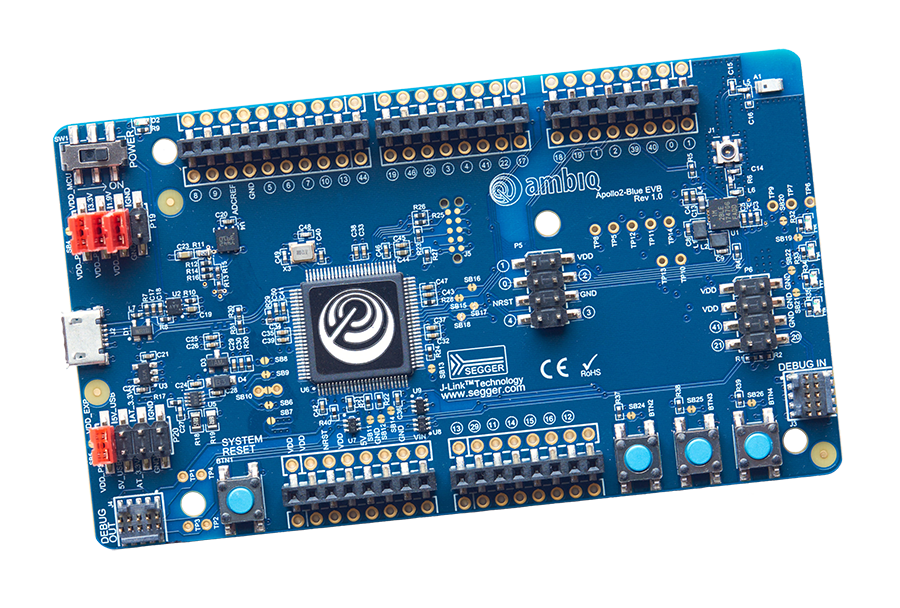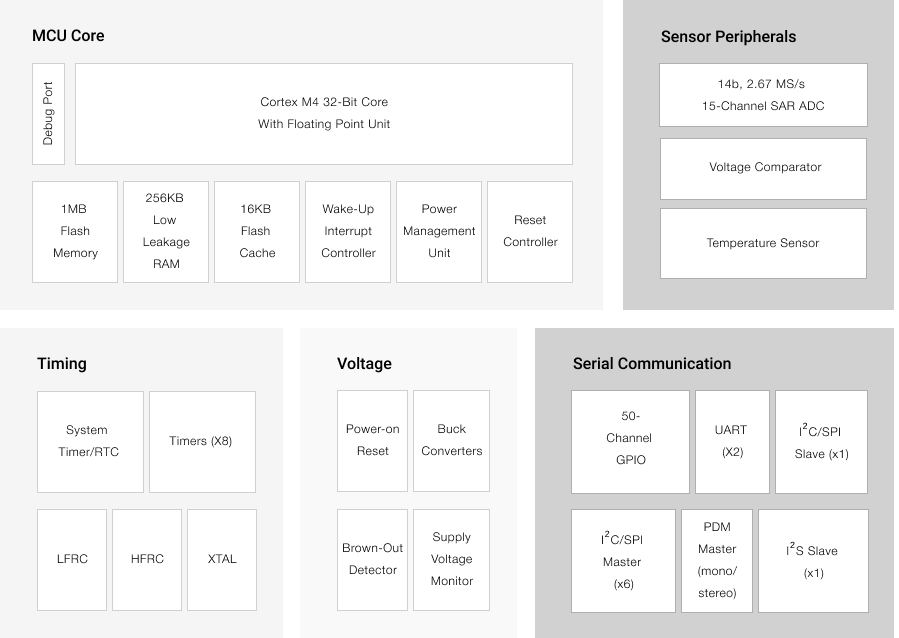The Apollo2 SoC is an ultra-low power, highly integrated system on a chip designed for battery-powered and portable, mobile devices. At the heart of the Apollo2 SoC is Ambiq’s patented Sub-threshold Power Optimized Technology (SPOT®) and a powerful Arm® Cortex®-M4 processor with Floating Point Unit.






